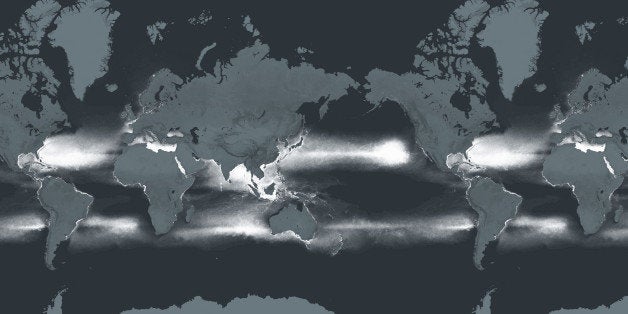
An avalanche of new science and activism have taken ocean plastic pollution head on, to the point that we can redefine how we see the problem and refine how we solve it.
The marvels of 20th-century synthetic chemistry has led to a diffusion of microplastic pollution everywhere we look. Micro-and nano-plastics, including shed fibers from billions of items of clothing washed daily, have been found in every ocean gyre, increasingly in lakes and rivers worldwide, frozen into ice cores, in beach sediments everywhere and floating in the air. In our recent global estimate, we estimated more than 5 trillion individual pieces of plastic in the ocean, of which more than 90% is smaller than a grain of rice. This plastic smog parallels the air pollution crises of the 1970s, when a fine particulate of carbon and other chemicals hovered over our cities. Synthetic chemistry hovers throughout our oceans in much the same way.
But there is tremendous help in the actions coming from legislation and innovation. A wide coalition of organizations, agencies and scientists, are seeing and solving this problem differently than just a few years ago. There have been more scientific publications in the last four years then the previous four decades. Gone is the notion that you can net the ocean for plastic trash, thanks to our modern understanding of the wide distribution of plastic pollution and the huge ecological impact using wide nets. The transition of innovation is leaning upstream big time. Hard-won legislative battles to usher in smarter design of a product and its packaging are coupled with innovative reuse of what's available.
The recent G7 summit of world leaders put product bans as an important strategy, pointing to efforts worldwide to rid society of thin plastic bags, foamed polystyrene for food applications, and plastic microbeads in cosmetics and toothpaste. Microbead bans across the United States are winning, though the devilish details are in the exceptions industry repeatedly sneaks in. To date, eight states have passed microbead bans.
One byproduct of the enormity of the problem is an abundance of material to work with. Some companies like Method, have produced products from plastics washed ashore in Hawaii, but admit that the economics of collection, sorting, cleaning and transportation do not compete with the easy availability of virgin resin pellets. Other companies, like singer/songwriter Pharrell Williams clothing brand, "G-Star Raw the Oceans", and pro surfer Kelly Slater's brand "Outer Known," are remanufacturing recycled plastic (not ocean plastic) into new textiles. But, they must defend against criticism of their clothing shedding fibers into our waterways through the wash. Another company, Bureo Skateboards, is intersecting nylon fishing nets through incentivized recovery, turning them into skateboards and sunglasses, but state clearly that they are collecting nets from fishermen, not from the ocean.
Collectively, these companies point out the sheer difficulty in making ocean-plastic useful. The plastic smog is globally dispersed throughout our oceans, mostly shredded into microplastics, and contaminated by many toxicants. The efforts of these companies to create a circular economy around waste is a growing trend, and so are the efforts to rid society of the poorly designed products that escape the circular economy. The old linear economic model of burning or burying trash has too many leaks in the system to capture and contain single-use throwaway plastics.
A circular economy must prevail, and hopefully, the attention drawn to the issue by the United Nations Sustainable Development Goals Goal #14: "Life Below Water" will help. Though civilization will have to live with a blanket of microplastics worldwide preserved in geologic history, we know enough today to rein in the "Throw Away" lifestyle of the 20 century, while reinventing anew.
This post is part of a series produced by The Huffington Post, "What's Working: Sustainable Development Goals," in conjunction with the United Nations' Sustainable Development Goals (SDGs). The proposed set of milestones will be the subject of discussion at the UN General Assembly meeting on Sept. 25-27, 2015 in New York. The goals, which will replace the UN's Millennium Development Goals (2000-2015), cover 17 key areas of development -- including poverty, hunger, health, education, and gender equality, among many others. As part of The Huffington Post's commitment to solutions-oriented journalism, this What's Working SDG blog series will focus on one goal every weekday in September. This post addresses Goal 14.